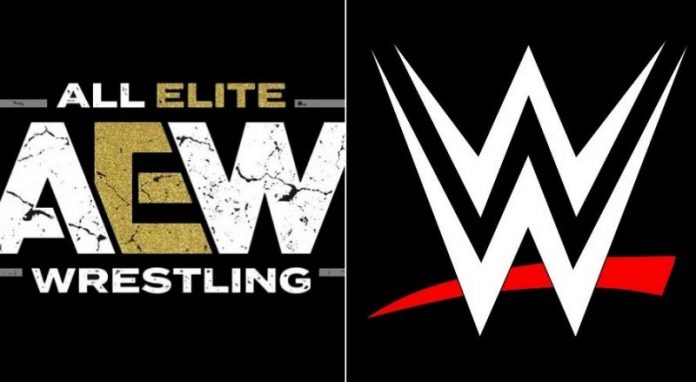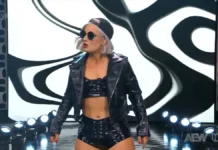
Earlier this week, it was announced that the NXT brand will start to air live every Wednesday on USA with the premiere episode on September 18 for the group that was exclusively on the WWE Network prior to this. The move was done in response to All Elite Wrestling’s TV slot on Wednesdays on TNT on October 3, which will bring sports entertainment back to the network for the first time since 2001.
There are several different aspects to this story, but let’s discuss some of the more fundamental angles to the narrative ahead of both shows broadcast debuts.
For NXT, it must be stated that the developmental brand is no longer developmental, especially because it will share space with Raw so that alone impacts the future. Many times in the past, there was the “debut pop” for an NXT talent that would show up on Raw, but since those competitors will be seen weekly by a similar audience, it’s not nearly as memorable for someone’s debut on a different show. It’s also extremely important to realize that this transition to television and a two-hour format will completely change the status of NXT. The product will have to be tailored to a much broader audience and the structure of the show will be formatted around the usual commercials of network television so the amount of time matches are given will be different as well. In many ways, NXT on a streaming platform gave the product much more flexibility, but TV structure and the two-hour slot will test the depth of the roster.
With the additional two hours on Wednesdays, that will bring the total of WWE weekly TV content to at least seven hours. I think the argument could be made that five hours a week now along with monthly pay-per-views is over saturation, but I’m not sure it’s logical to expect the audience to watch an additional two hours each week. Granted, there are diehard fans that will watch as much wrestling as is available, but outside of the wrestling bubble, most of the general public doesn’t want to spend that amount of time on sports entertainment each week.
Don’t get me wrong, NXT has a talented roster, but to add another 30% of content to the main stream TV schedule seems like too many hours for a viewer to realistically follow, especially when the ratings for Raw and Smackdown don’t indicate that there’s any demand for more TV content. While the WWE machine will continue to produce countless hours of material, isn’t there a limit to how much wrestling someone will realistically watch? Considering that there are more entertainment options now than any other time in history, I don’t know how much of the audience NXT will retain from the Raw or Smackdown viewership.
What the All Elite Wrestling audience is remains to be seen. I’ve said it before and I will say it again, AEW doesn’t have to compete with WWE to be successful, but rather find a way to generate revenue and become profitable. As far as business goes, profitability is the ultimate measure of success. Obviously, Vince McMahon wanted to counter the AEW weekly show, which almost gives All Elite Wrestling a form of validation because even McMahon acknowledges that the new organization is trying to establish itself on a national level. In many ways, what the Khan project has already accomplished is unprecedented, considering that in the time since WCW folded, a myriad of groups tried to “go national” in some form or fashion, but All Elite is starting on national television.
As I’ve said previously, there were a lot of pieces of the puzzle that had to fit together organically and spontaneously to get to this point, which is why it could work. Kenny Omega had some historic bouts in Japan around the same time that the Young Bucks became extremely popular on social media and that occurred around the time that Cody asked for a release from the WWE. The fact that the Elite trios Ring Of Honor contracts expired at the same time and Kenny Omega also finished his New Japan deal at the time played a major role in the series of events as well. Add into that Tony Khan being willing to fund a wrestling venture are things over the course of a few years that couldn’t have been planned to work better than they unfolded naturally to bring the wrestling world to this point ahead of the TNT debut.
That being said, the pressure is on All Elite to produce a number, which might not necessarily be affected by the NXT schedule. One way or another AEW will have to generate viewers for its programming to truly get off the ground, and if NXT is enough to take a piece of their audience then the potential for their national success wasn’t major anyway. At the same time, if AEW can hold its own against a WWE brand in head-to-head competition, that alone gives them credibility as a force within the industry.
Does that mean there will be a Wednesday night war?
As much as fans want another wrestling war, the head-to-head competition on television doesn’t necessarily mean there will be a battle for ratings. If anything, much of AEW’s core audience are fans that are discontent with the WWE product so it’s doubtful that those supporters will be compelled to tune into NXT instead just because it airs on the same night. One of the most intriguing aspects of this scenario is that the ratings will show how many fans would watch wrestling regularly if there was an alternative product. Keep in mind, the Raw Reunion show from a few weeks ago garnered over three million viewers, a number the current product rarely draws so obviously there are more people that would watch the sport if the was a show that made them want to tune in each week.
While some jaded fans will complain about the changes to NXT or attempt to downgrade AEW to be contrarian, this entire situation is proof that competition fuels the industry. For the first time since the Monday night wars, there will be legitimate head-to-head competition for pro wrestling ratings. (TNA’s short-lived attempt aside) More than anything there’s a buzz around this scenario and that has generated more hype than almost anything else this year. Considering that the WWE empire has plateaued with somewhat of a complacency, All Elite Wrestling on prime time television even benefits them. Perhaps, after almost twenty years as the undisputed winner of the ratings war, a new commodity will help push the WWE to produce a show that caters more to the fan demand than the corporate agenda. Basically, there’s more of a sense of optimism around the business now than there was in the past few years and that’s why competition is important for the industry.
What do you think? Comment below with your thoughts, opinions, feedback and anything else that was raised.
Until next week
-Jim LaMotta
E mail [email protected] | You can follow me on Twitter @jimlamotta







